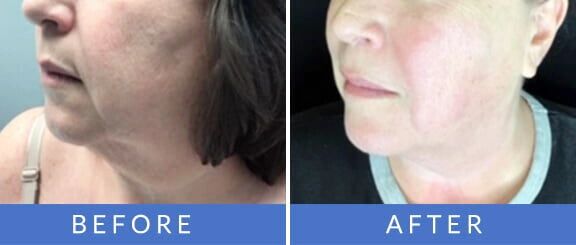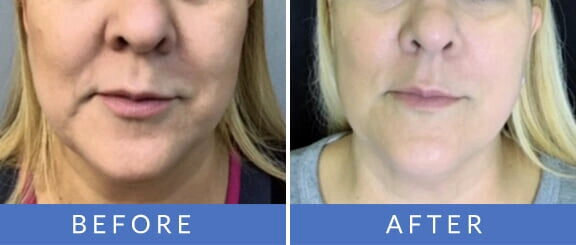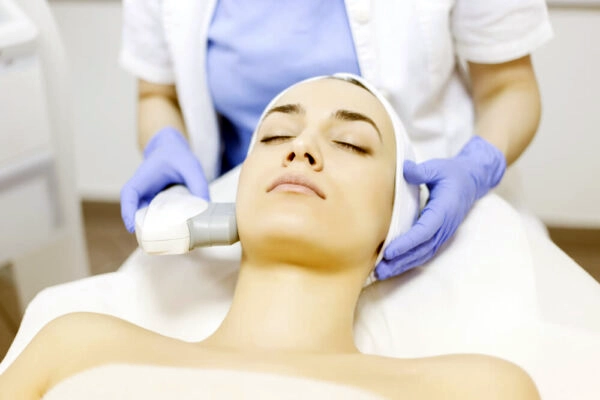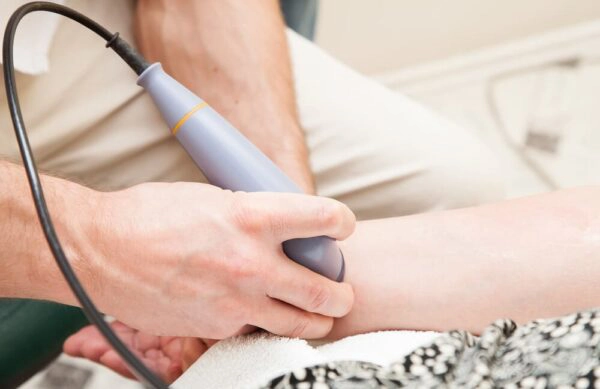Exilis vs. Ultherapy: Which Treatment is Right for You?
Ever wished that certain areas of your face or body were tighter and more contoured? This article covers everything about Exilis VS Ultherapy.
That’s exactly what both the Exilis and Ultherapy treatments aim to do…
If you’ve been struggling to decide which treatment would be best for you, this guide is here to help. Here is everything you need to know about the Exilis and Ultherapy treatments, so that you can make the best decision possible.
What is Exilis

Exilis is a pain-free face and body contouring procedure. It uses both ultrasound and radio-frequency technology to tighten the skin and reduce wrinkles, sagging, the appearance of cellulite and unwanted areas of fat.
This treatment is conducted in a noninvasive way to improve the overall texture of the skin. The way in which this treatment’s technology is able to heat the deeper layers of the skin safely eliminates fat without the need for surgery.
Meanwhile, a smoother and tighter result is achieved by encouraging the production of the skin’s own natural collagen and elastin.
Incredibly, Exilis is the only face and body sculpting treatment that uses this revolutionary technology. It can be used to treat any part of the body from head to toe, significantly reducing the appearance of cellulite and stubborn age lines.
This treatment also helps with:
- Skin toning
- Facial rejuvenation
- Body contouring
What is Ultherapy

Unlike Exilis, which makes use of both ultrasound and radio-frequency, Ultherapy focuses solely on using ultrasound technology. It delivers a pulsed heat energy down into the skin, stimulating collagen and elastin production.
This has the effect of giving the treated area a smoother, tighter and firmer appearance.
Just like with Exilis, Ultherapy is completely noninvasive, although it does not target the deeper layers of the skin in the same way that Exilis does.
Which Areas of the Body Can Be Treated With Exilis?

As with every treatment of this nature, each person is different. Some may wish to improve the appearance of aging on their faces whilst others want to tone and smooth out their arms, legs or stomach.
This is where Exilis really excels…
Exilis can be be used to treat every part of the body from head to toe. Also, owing to a grounding pad that is usually placed on the clients’ back for the duration of the procedure, it is absolutely safe to do so. This procedure has been FDA approved since 2015.
Exilis is used on the face and body to tighten and smooth out the skin by enhancing the production of elastin and collagen. Both of these proteins make up the support structure of your skin and are responsible for its appearance. Through aging and exposure to sunlight, our skin naturally begins to break down these fibers. By encouraging the growth of these important structural fibers, skin becomes noticeably tighter and firmer, regaining a youthful appearance.
You might be thinking…
Aren’t there plenty of serums, creams and other topical products that can do the same?
Topical products can only work to a certain extent. With Exilis, your skin’s collagen and elastin will be restored at a much higher rate than you would experience with topical skincare.
In addition to facial treatments, Exilis can be used on pretty much any part of the body to treat signs of aging, as well as those stubborn pockets of fat. Popular areas for general smoothing, toning and fat reduction include:
- Arms
- Legs
- Abdomen
Many find their stomachs are the hardest part to lose weight from. This is because your body naturally likes to store fat closest to your vital organs. Of course, everything from genetics to age can cause fat to stubbornly cling to your abdomen too, but evolution plays an even larger role in this!
If you’re finding it impossible to drop pounds from your stomach after consistent exercise and a balanced diet, Exilis could be the solution you’ve been wishing for.
How many treatments are recommended?
The number of treatments needed will depend on the area of the body to be treated as well as:
- The condition of your skin
- Your age
- The results you’re looking to achieve
Generally, Plantation Med Spa recommends a series of 4-6 treatments spaced one week apart. In terms of the amount of time each session will take, you can expect each area to take around 15-30 minutes to treat.

Which Areas of the Body Can Be Treated with Ultheraphy?
Ultherapy has a few more limitations than Exilis when it comes to treatment areas. Ultherapy is only legally approved to:
- Lift the brows
- Smooth age lines on the neck, face and décolletage
- Bring some contour back the jawline
How many treatments are recommended?
Usually, just one treatment is needed to see the effects of Ultherapy, but some may require more. This will once again be dependent on age, the areas to be treated and the severity of skin laxity. Annual touch-ups are also a must in order to maintain results.
Do the Treatments Hurt?
For Exilis, this is an easy one…
The Exilis treatment is completely pain-free.
No numbing creams or anesthetics are needed whatsoever. All you’ll feel is a pleasant warming sensation, similar to that of a soothing hot stone massage!
How about Ultherapy?
This is where the treatments differ…
Ultherapy is known for being extremely painful, requiring the use of some sort of pain relief.
Levels of discomfort will, of course, differ from person to person, but a topical numbing cream is usually applied and Pro-nox gas (also known as laughing gas) may also be available. If you know that you have a low pain tolerance, your doctor may offer to prescribe you something stronger.
How Soon Will I See Results and How Long Will They Last?

With Exilis, although it typically takes about 90 days for your body to produce collagen after your procedure, clients have reported results after just one session. If your weight is maintained, results will usually last for around three to four years, making this one the most cost-effective treatments available for body shaping and contouring.
The results of Ultherapy take longer to show, with instant results being much rarer than Exilis. Although you may begin to notice changes after two to three months, it could take up to six months before your results are fully visible.
One thing to keep in mind is that the results from an Ultherapy treatment are usually much more subtle when compared to those from an Exilis treatment. Some patients notice very few, if any at all, improvements to their skin, whereas Exilis delivers fantastic results just about every time. A clinical study found that just 65% of patients report seeing some improvements a few months after their Ultherapy treatment.
Is There a Recovery Time for the Treatments?
Concerned you’ll need to take the day off?
There’s no need!
Both Exilis and Ultherapy require no downtime. Therefore, you will be able to resume your daily activities immediately after your treatment.
Are There Any Side Effects?
There are no significant reported side effects following an Exilis treatment. You may experience a very mild and temporary tingling sensation, warm skin or slight redness afterward, though this will be short-lived and not painful. You can expect any redness to subside within 20 minutes or so after your treatment.
Most clients report no discomfort or pain whatsoever. This, combined with the long-lasting effects and minimal time frame needed for the procedure itself, makes it a safe, effective and time-efficient option for many men and women.
Just like with Exilis, there are no significant side effects from Ultherapy treatments, though some may experience the following after their treatment:
- Mild swelling
- Redness or tingling
This is more of a discomfort than a pain and will usually subside within a short time.
One thing to keep in mind is that while the discomfort after an Exilis treatment only lasts for a few minutes, the discomfort after an Ultherapy treatment can go on for a few days.
Exilis VS Ultherapy

The main differences between Exilis and Ultherapy are the technologies used to carry out each treatment.
Exilis uses both ultrasound and radio-frequency technology to eliminate fatty deposits, encourage collagen production, and reduce the appearance of fine lines and wrinkles.
On the other hand, Ultherapy only uses ultrasound technology, meaning that you will not experience quite the same range of results, such as fat reduction. Ultherapy is also not able to target deep wrinkles in the same way that Exilis does.
The differing levels of pain that each treatment causes is also sometimes enough to sway people towards Exilis over Ultherapy. Ultherapy is much more painful than Exilis, which can be quite a deterrent to those who are looking to have a large area of their body treated.
Another area in which Exilis really shines is with its built-in ability to measure temperature.
Why does this matter?
Because, ideally, you want the treatment to impart as much heat as safely possible into your skin, as this will maximize results. However, the word “safely” is key – too much heat can cause irreparable damage to your skin. With Ultherapy, the only way your doctor will know how hot the treatment feels on your skin is with your feedback. However, the Exilis device is able to measure this itself, enabling it to deliver the optimum amount of heat into your skin.
What are the similarities between the two treatments?
Both options are great alternatives to surgery, and the fact that neither requires downtime afterwards is a huge benefit. The results of each are also proven to last a long time.
How Much Do Treatments Cost?
A full list of our prices, along with the areas of the body on which Exilis can be used for, can be found here.
The cost of Ultherapy differs greatly from provider to provider, although each session tends to cost significantly more than a series of Exilis treatments. The price for your Ultherapy treatment will also depend on the following:
- Number of treatments needed
- Condition of the skin
- Age of the skin
- Areas to be treated
Generally, although more treatments are needed for Exilis, you will likely find that Exilis treatments work out to be much more cost-effective when compared to Ultherapy.
Which Treatment is Right for Me?

The Exilis treatment is an effective and safe option for anyone aged 18 or over who is dealing with the following:
- Unwanted age lines
- Stubborn areas of fatty deposits that cannot be improved through exercise
- Minor sagging of the skin
- Cellulite
This treatment should be avoided if you have deep facial scarring, are pregnant, or have an implant fitted such as a pacemaker.
Since Exilis uses both ultrasound and radio-frequency technology, and can be used on more parts of the face and body than Ultherapy, with the added bonus of fat reduction too, most people usually end up opting for Exilis over Ultherapy.
As mentioned earlier, those with a low pain threshold would also be better off with Exilis.
However, the one benefit that Ultherapy has going for it in this respect is its convenience in terms of time. The treatment is quick, although the results are not quite as long-lasting as Exilis.
Now that you know the pros and cons of both Exilis and Ultherapy, you are equipped to make a well-informed decision for yourself. If you would like some advice that is a little more personalized, feel free to get in touch with us to discuss your skin-tightening needs.
Hopefully, we have covered everything about Exilis VS Ultherapy. Please, don’t hesitate to drop us an email or give us a call for any question, and our professional team is ready to answer.
Book a consultion online now? Visit the Plantation Med Spa now to treat yourself to some of our many services and treatment offers! Call us at (954) 595-2607



